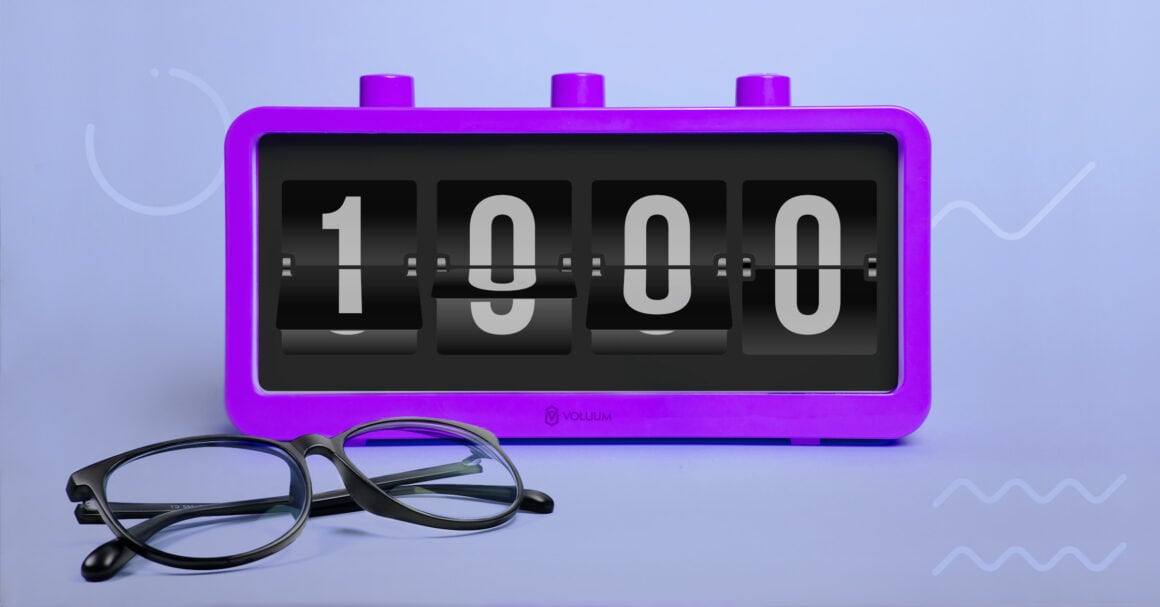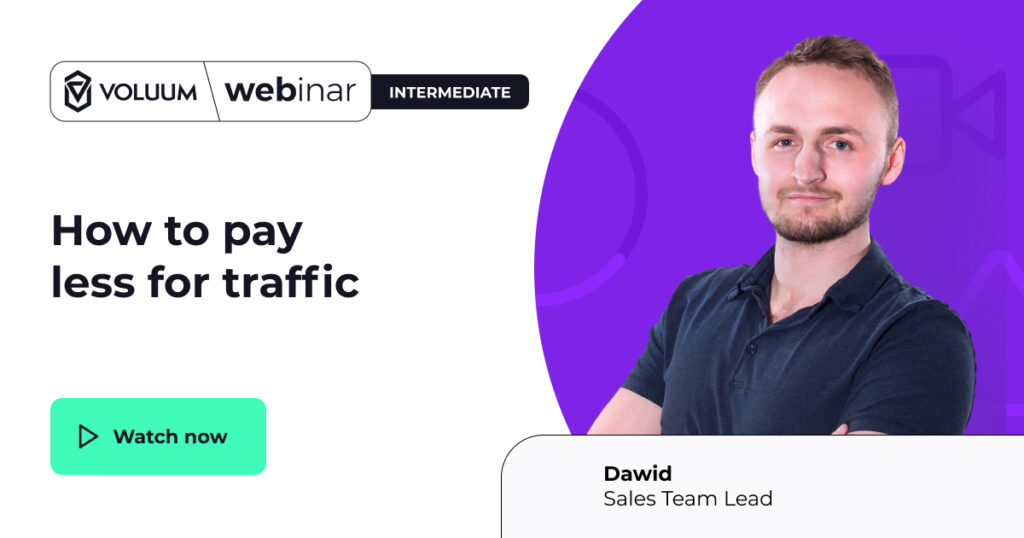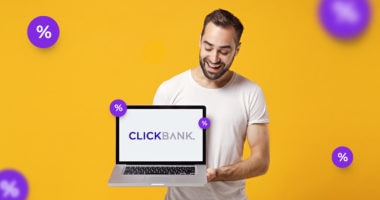We work with performance marketers quite often and at some point, we noticed that understanding pricing models can be difficult, especially at the very beginning. This is why we created this article – so you can learn about the most common pricing models and understand why the CPM model is almost always the best choice for native ads.
Types of Pricing Models
All the models have their advantages and disadvantages. Shocker, right?
But there’s always one that can be the best fit for you and your advertising. And we’re here to help you identify that.
Think about your product, your KPIs (Key Performance Indicators), and your target users. Then decide what will work best for your campaigns. Just make sure you understand the pricing models correctly.
- CPM (Cost Per Mille) – a pricing model where the advertiser pays for a thousand impressions (ad views). So basically, every time an ad loads on a page or in an application. It’s one of the most common ways of DSP media buying.
- CPC (Cost Per Click), also known as PPC (pay per click) – in this revenue model the advertiser only pays whenever an ad is clicked on.
- CPA/CPS (Cost Per Acquisition or Cost Per Sale) – in such a case, advertisers pay only if a conversion happens. This conversion may be any desired action on the website, like a sign-up or a purchase.
- CPL (Cost Per Lead) – simply put, a type of CPA. In this media buying model, advertisers pay when a lead form with some crucial user data is completed and submitted.
- CPI (Cost Per Install) – this model is reserved for mobile app marketers. Essentially, it is like cost per acquisition (CPA), but just a bit more precise. Advertisers pay whenever the app they are promoting gets downloaded and installed by a user who interacted with an ad.
- CPV (Cost Per View) known as PPV (Pay Per View) – a media buying model in which advertisers pay just for a single ad view on the publisher’s site.
- Revshare (Revenue Share) – this pricing model is based on the percentage payouts on the revenue made from offers. Every time a customer clicks on the ad, the advertiser pays publishers a fraction of their profits.
Accurate cost tracking
The number one condition of using these cost models is to accurately track your costs and profits. While most ad networks offer a rudimentary tracking solution, a dedicated tracker is a must for a seasoned marketer. An ad tracker such as Voluum allows you to track costs and profits using different methods (S2S postbacks or pixels), connect different marketing channels and provide in-depth analysis, with metrics such as eCPM or eCPC calculated automatically.
What is the CPM Model and How is It Calculated?
The CPM model is often used in native advertising. It relies on ad views (impressions). It does not matter if an ad was clicked on or not. Media buyers pay for every thousand impressions of an ad. For example, if a publisher (for example a website) charges a CPM of $2, you will pay $2 for every 1,000 ads that its visitors see.
OK, that was simple. And what about the eCPM? Have you ever come across it? It basically shows the actual cost per 1,000 impressions.
If you buy traffic using the CPM cost model, the eCPM tells you how much you actually have paid for the traffic (for this cost model, the 2nd price auction bidding model is typically used, so after winning the auction, you pay the amount of the second highest bid plus one cent).
If you have purchased traffic using other (CPA, CPC, Revshare) cost models, the eCPM shows you the estimated average price for one thousand impressions
The eCPM is calculated using the below formula:

Advantages of CPM Pricing Model
The main advantages of the CPM model for both brand and performance marketers are:
- The possibility of lowering the CPC (if a user is optimizing the campaign correctly);
- Access to the huge inventory of CPM advertising platforms.
Let’s talk about optimization and how it can help to lower the CPC. CPM advertising comes with pretty predictable pricing. You pay your declared CPM bid for a thousand impressions. If your ads generate a high CTR, CPM turns out to be a low-cost solution. That’s why we always encourage Voluum clients to use our reports and to optimize campaigns on a daily basis. The most convenient way to achieve high CTR is to constantly test new creatives and pause the ones with a low CTR. A well optimized CPM campaign can save you a lot of money since you are paying a fixed price for a thousand impressions while your click through rate is high.
Moreover, the CPM bidding model works best if the main purpose of the campaign is to raise brand awareness among the target audience. In contrast, paying for clicks or conversions (CPC/CPA models) can cause the advertiser to burn more money from the testing budget since clicks are not the main KPI indicator of such campaigns. Meanwhile, on the other hand, the CPM model seems to fit such campaigns just perfectly.
Disadvantages of CPM Pricing Model
Now let’s talk about CPM disadvantages which include: bot traffic (advertising fraud) and incorrectly counting impressions due to duplicate views.
Advertisers are often worried about bot traffic when choosing the CPM model for bidding. Advertising fraud usually happens when an unfair publisher creates automated scripts to send traffic to a website with the purpose of increasing the number of views. However, with Voluum, there is no need to worry about bot traffic anymore! We’ve developed an Anti-Fraud Kit which enables you to identify click fraud and invalid traffic in your campaigns. That means no more money wasted on bot traffic – you can easily detect which publishers are selling suspicious visits and clicks and stop buying from them. Use it with a trustworthy ad network and you will be fine!
When it comes to incorrectly counting impressions due to duplicate views, you can manually adjust the number of impressions which come from one device/IP address during the day in most ad networks. But if your ad was displayed a few times a day on the same device it’s not necessarily a bad thing! Especially in the case of desktop traffic, when different users are using the same PC it’s optimal to show them an ad more than once.
Our experience has shown that with frequency capping set to 5-6 for desktop and 3-4 on mobile devices, conversion rates are usually higher than if you set it to 1. So keep that in mind while setting those limits!
Which Pricing Model is Best for Native Advertising?
Agencies, brands and digital advertisers running native ads most typically aim for either performance or brand-awareness. We’d say the CPM model is great for both! Why?
Simply put, the CPM pricing model is all about scale. Incidentally, the same goes for brand-awareness.
If you’re paying by CPM, it’s easy to get a high ROI, especially when you identify your top performing creative sets. With each click on your creative, your brand or product is getting more popular while your cost per thousand impressions remains the same or even decreases. That’s where the importance of testing your ads comes in as you can then scale the winners.
For brand-awareness, the click-through rate isn’t the main priority, since the engagement from having an advertisement placed on a high volume source helps to promote a company or a message, even if a user does not click on the ad.
When you run a performance-oriented ad campaign, at the end of the day, all that matters is the performance. Whether you are looking for leads, sales, or installs, you want to get conversions at the lowest possible price.
Now – here’s the catch. With the CPC model, even a good creative set can sometimes turn a negative ROI because the more clicks, the higher the cost.
Let me tell you this once more – your pricing model depends on your goals.
- Not ready to get charged with no guarantee of sales? Choose CPA.
- Looking for impression scalability and ROI? Go with CPM.
- Want to encourage your target audience to download a mobile app? Charge by CPI.
CPM model case study
Consider a situation in which you want to promote an app. It feels natural to optimize your campaign for the CPI model. If you have partners that are rewarded for getting people to install the app, they will do everything in their power to make sure that the app install occurs – but not much after that. If you alone are responsible for promoting your app, you will create content that revolves around the ‘try it for yourself’ approach rather than establishing an app’s brand in your visitors’ minds.
There are plenty of apps out there and getting people to install is a sighted approach. People don’t install as many new apps as they did 10 years ago. The important KPI’s to focus on are ROAS (return on ad spend) and LTV (lifetime value).
The CPM model supports that with the emphasis put on brand awareness. Plus, with CPM, you can use the VTA conversion attribution model instead of dominant click-based CTA one. The difference is that the success of a conversion (app install and additional ones such as achieving certain milestones in an app) is attributed to the original impression of an ad rather than click on it. People often don’t want their flow to be interrupted and won’t install the advertised app straight away but very often remember the app’s name and install it directly form an apps store. The CTA model would suggest that the ad didn’t contribute to the conversion where it actually did.
CPM model allows focusing on long-term benefits such as brand awareness and LTV.
Hot Insight
With a tracking solution like Voluum, there are innumerable ways to increase your impression CTR and ROI as the optimization can be done at various levels.
You can set auto-rules and automatically change bids for a whole campaign or selected placements if they prove to be profitable. This way you will increase your win rate and get the most traffic.
You can automatically populate whitelists and blacklists, create advanced reports, re-route traffic based on its characteristics and so on. Increase CTR of your brand awareness campaigns with Voluum.
Conclusion
As you can see, different pricing methods are more appropriate for some ad campaigns than others. When choosing a pricing model, first analyze your product, the target audience and then try to decide what will work best for your native campaign. At the end of the day, it’s all about reaching your campaign goals.
CPM advertising is a great opportunity especially for advertisers with the goal of creating brand equity to reach potential customers.
Also, don’t forget that when running CPM campaigns you’ll still get clicks to your website. You could say you’re getting the best of both worlds.
So don’t be afraid to test it out!
Wondering how to start an effective CPM native campaign?






